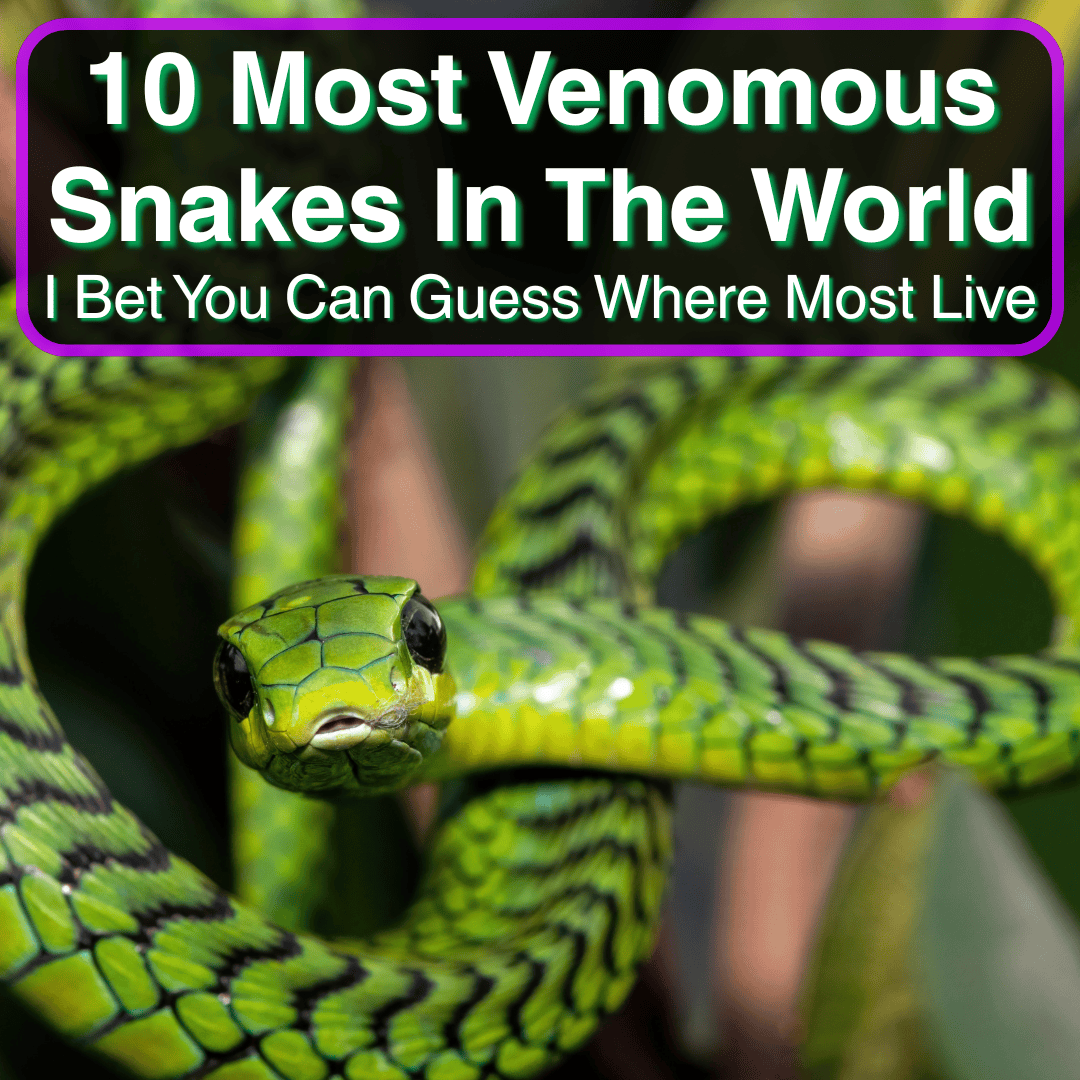
But most snakes don’t actually pose a threat.
It’s the ones that do that ruin the reputation of the entire species.
The 10 snakes below are the world’s most venomous.
These are the snakes you can fear. At the very least, you should respect them.
But it is important to keep in mind that the vast majority of snakes are harmless. Not just harmless, but actually helpful.
That’s why we will also cover where these snakes live and what makes their venom so powerful. If you don’t have venomous snakes in your area, you can safely stop being afraid of these amazing creatures.
1. Inland Taipan
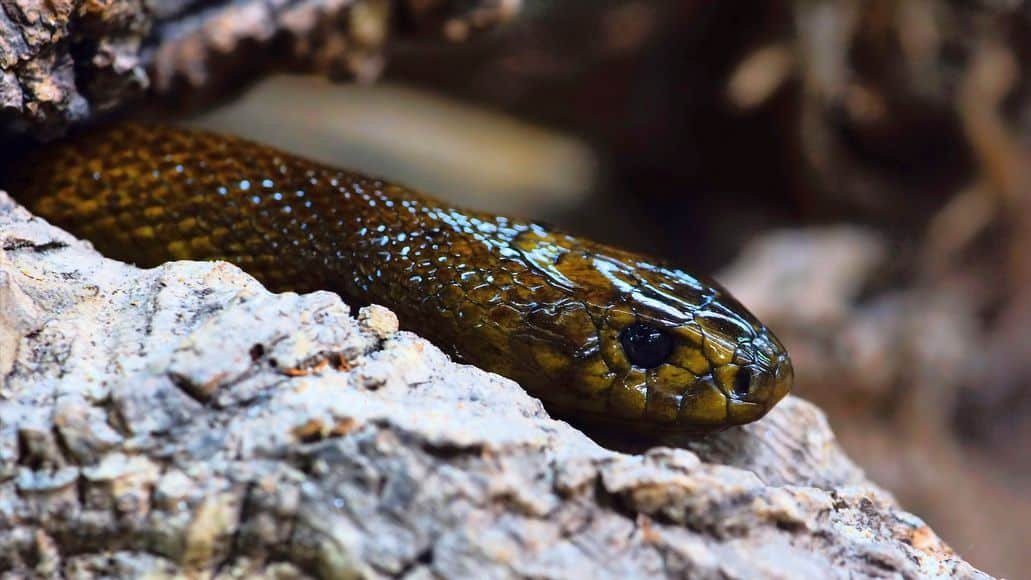
The Inland Taipan is widely regarded as the most venomous snake in the world. You’ll find this reptile in the arid regions of central Australia.
This snake has an incredibly low LD50 rating of just 0.025 mg/kg. This means that only a tiny amount of its venom can be fatal.
This snake’s venom contains powerful neurotoxins that can cause paralysis and breathing problems. If you were bitten by an Inland Taipan, the venom could kill you in under an hour without treatment.
The Inland Taipan is also called the “fierce snake” because of this potent venom. But honestly, it’s not fierce at all. It is actually quite shy and tries to avoid people. It also lives in remote desert areas.
For that reason, bites are rare. It prefers hot, dry climates and stays away from towns and cities. Unless you’re exploring Australia’s outback, you’re unlikely to see one.
2. Black Mamba
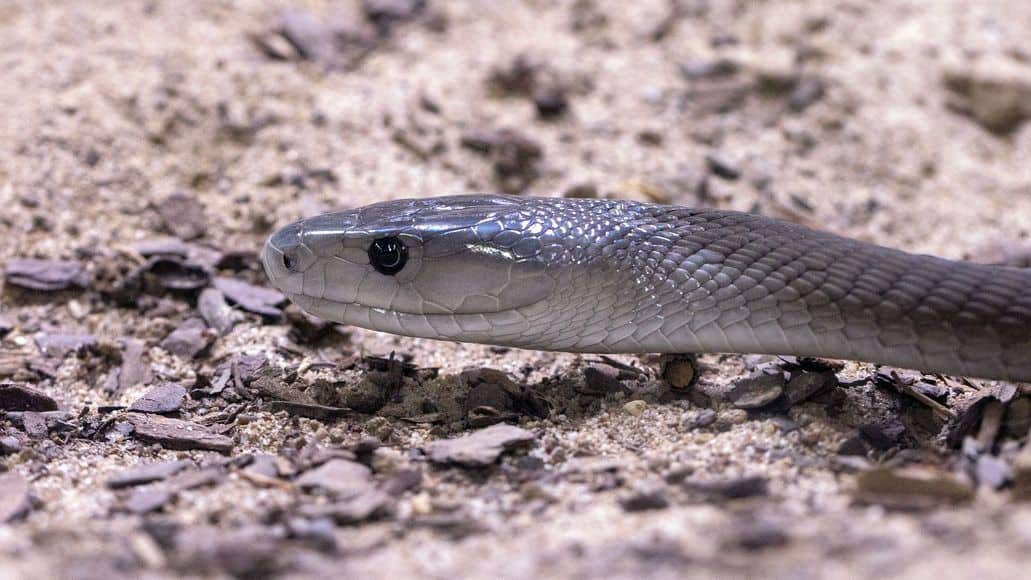
The black mamba is probably Africa’s most feared snake. You’ll find this deadly snake primarily in Eastern Africa, but it also lives throughout Sub-Saharan and Southern Africa.
Despite its name, you won’t see a black snake. The black mamba actually has olive or yellowish brown coloring. It gets its name from the dark inside of its mouth. Not something you want to get a close look at, trust me.
This snake is incredibly long and fast. It can grow between 6 feet 7 inches to almost 10 feet long, making it the longest snake in Africa.
Speed makes the black mamba especially dangerous. It can move up to 12 mph when threatened., And this fast-moving snake can quickly become aggressive and will bite multiple times.
The venom works as a neurotoxin, attacking your nervous system. Without treatment, a bite can be fatal within hours.
Snakes on other continents cause more deaths overall, but the black mamba is Africa’s deadliest snake.
3. King Cobra
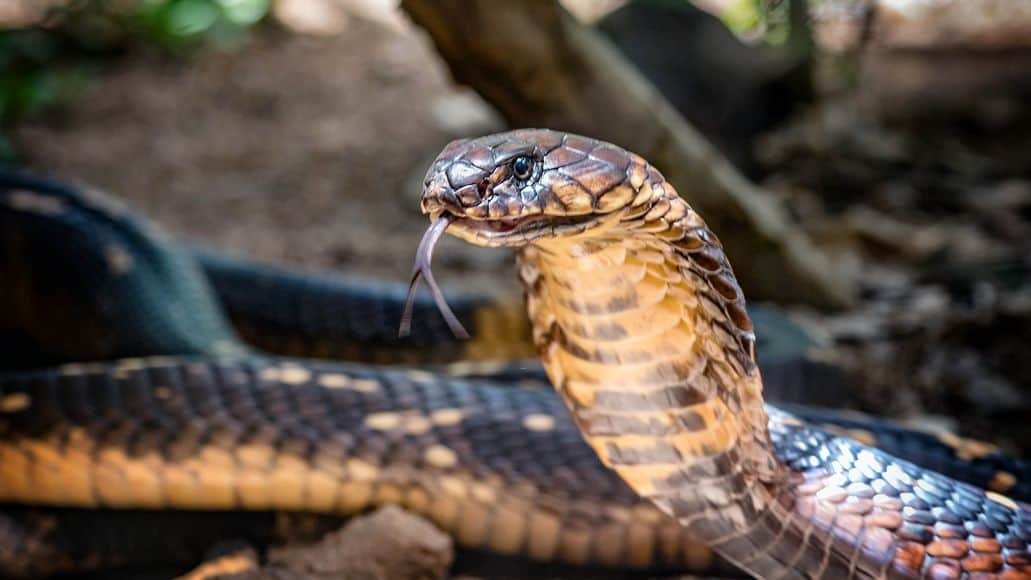
The king cobra is the world’s longest venomous snake, growing up to 18 feet long (it made it onto the list of the largest snakes on earth). You’ll find these impressive snakes in northern India, southern China, and Southeast Asia.
What makes king cobras so dangerous is their massive venom output. They inject 400-1000 mg of venom per bite, which is enough to kill about 11 people.
Their venom contains powerful neurotoxins that attack your nervous system. This can cause breathing problems and heart failure if you don’t get treatment quickly.
King cobras are surprisingly smart snakes. They can recognize their handlers and have excellent eyesight—they can spot prey from 330 feet away.
These snakes prefer to eat other snakes, including venomous ones. They’re not usually aggressive toward people but will defend themselves if threatened.
If you encounter a king cobra, you’ll notice its famous hood display. That’s a warning sign that the snake feels threatened and could strike. Heed the warning.
4. Coastal Taipan
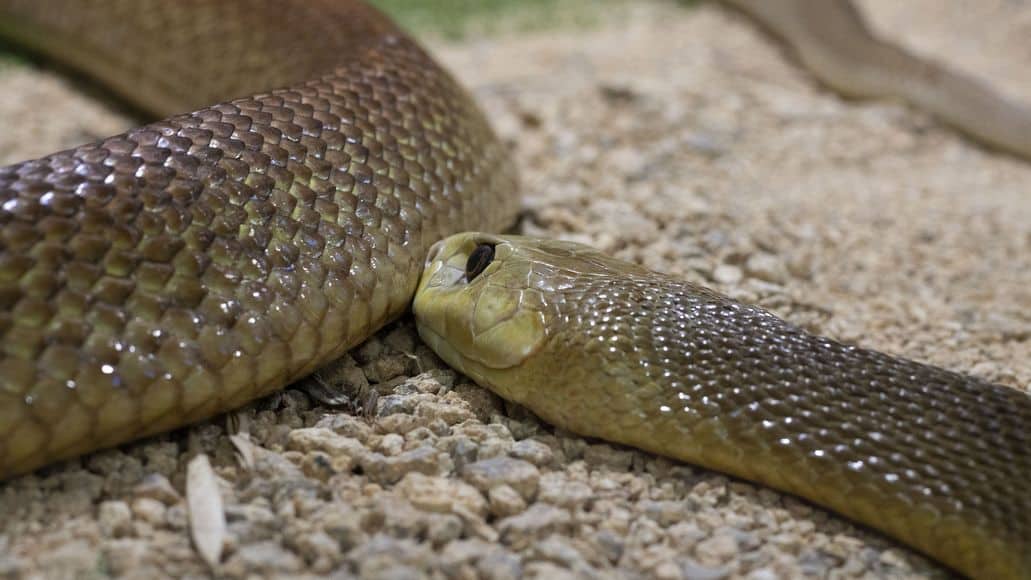
The coastal taipan ranks as the third-most venomous terrestrial snake in the world. You’ll find this snake in the coastal regions of northern and eastern Australia and New Guinea.
This snake goes by several names. You might hear it called the common taipan or eastern taipan, but scientists know it as Oxyuranus scutellatus.
The coastal taipan is Australia’s second-longest venomous snake. It prefers to live in coastal areas where the climate stays warm and humid.
This snake has a high level of notoriety in Australia. Many people fear it more than other dangerous snakes in the country.
The coastal taipan’s venom is incredibly potent. Even though it’s smaller than some other snakes, one bite contains enough toxins to be fatal to humans.
This snake typically avoids human contact and prefers to stay in its natural habitat along Australia’s coastlines. Encounters can still happen if you’re in areas where these snakes live.
5. Tiger Snake
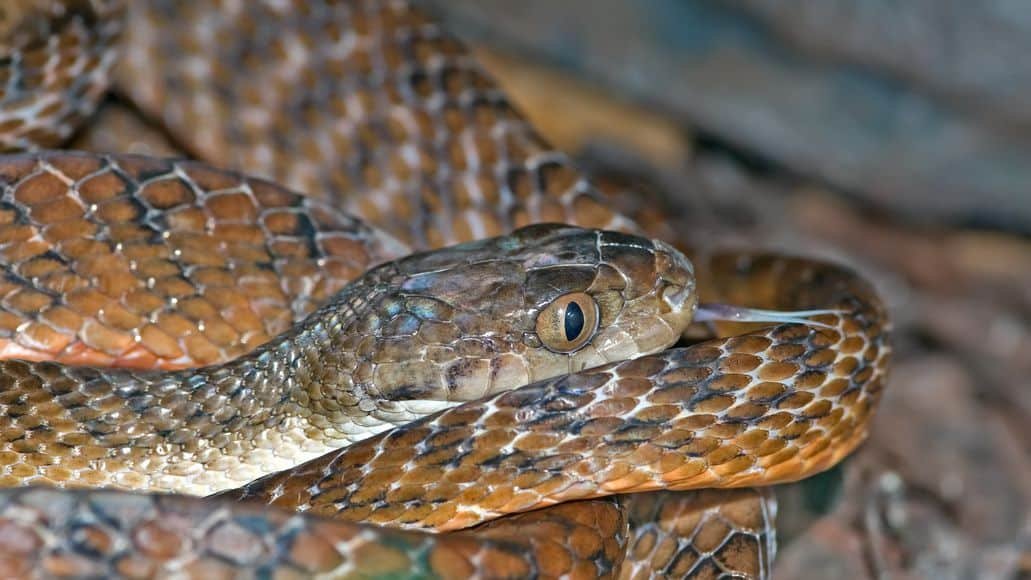
The Tiger Snake also lives in Australia. You’ll find these reptiles in southern regions of Australia, including coastal islands like Tasmania.
These snakes get their name from their banded patterns that look like tiger stripes. Their colors can vary widely depending on where they live.
If you encounter a Tiger Snake, you should know that its venom contains neurotoxins, myotoxins, and coagulants. This mix causes paralysis, muscle damage, and internal bleeding in humans.
The amount of venom considered dangerous to humans is 0.131 mg/kg. That’s a tiny amount that can cause serious harm.
Be extra careful around Tiger Snakes because they can be aggressive when disturbed. They’re known to deliver multiple bites quickly if they feel threatened.
Despite their aggressive nature, Tiger Snakes usually avoid human interaction. They really just want to be left alone. Don’t bother them and they won’t bother you.
6. Philippine Cobra
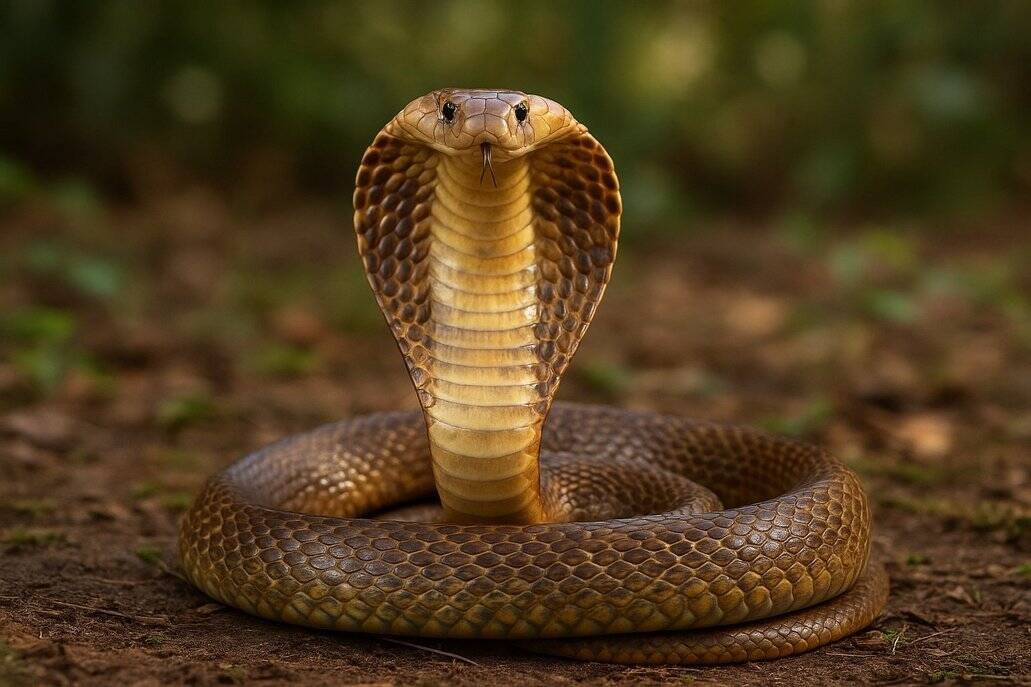
The Philippine Cobra is a highly venomous snake that you’ll find only in the Philippines. This species is most common in the northern islands of the country.
The Philippine cobra is the world’s most venomous species of cobra. Its neurotoxic venom is extremely potent and dangerous to humans.
This snake can grow up to 2 meters long. You’ll recognize it by its cobra hood and dark coloring. The Philippine cobra has conspicuous dark bars or spots on the underside of the neck near the hood area.
The venom from this cobra affects your nervous system and can cause respiratory failure if you don’t get medical treatment quickly. The bite delivers a lethal dose that requires immediate emergency care.
Be extremely careful around this species. The Philippine cobra’s venom is capable of causing respiratory failure and death in victims who don’t receive proper treatment.
7. Belcher’s Sea Snake
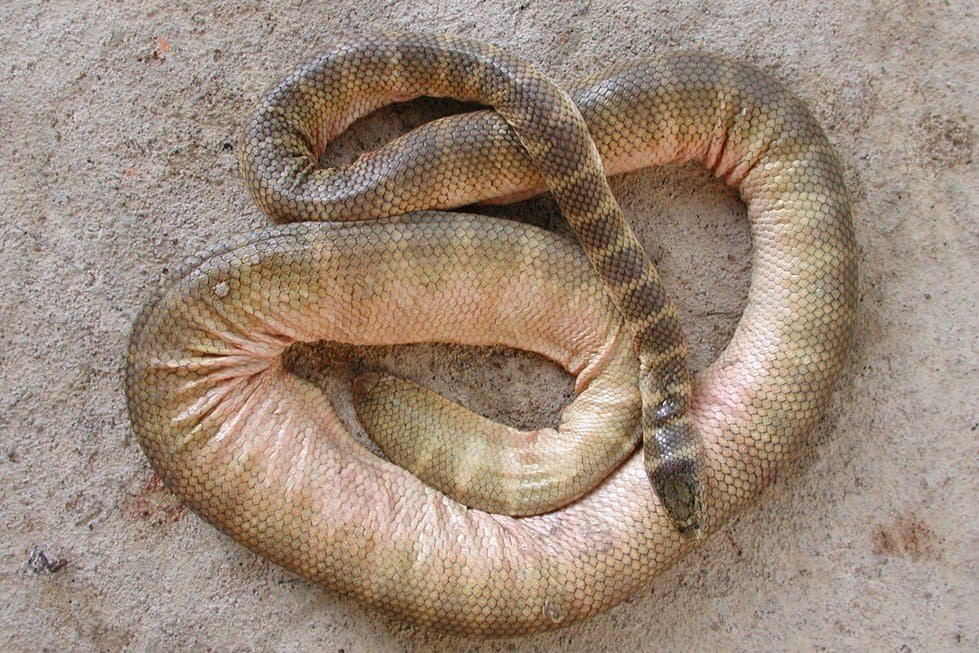
You’ll find Belcher’s sea snake in tropical waters from the Indian Ocean to Australia’s northern coast. This snake is also called the faint-banded sea snake.
Many people think this is the world’s most venomous snake, but that’s mostly due to confusion with other sea snake species.
The snake’s venom is extremely dangerous and contains neurotoxins and mycotoxins that can cause paralysis and breathing problems.
If you were bitten, you might experience severe stomach pain, seizures, dizziness, and vomiting. The venom can also cause paralysis.
Don’t worry too much, though. Belcher’s sea snake has a timid nature and rarely bites unless you really bother it.
You can recognize this snake by its faint bands and marine habitat. It lives in shallow coastal waters where it hunts fish and small sea creatures.
This snake belongs to the elapid family, which includes cobras and mambas. Like other sea snakes, it’s adapted perfectly to ocean life.
8. Eastern Brown Snake
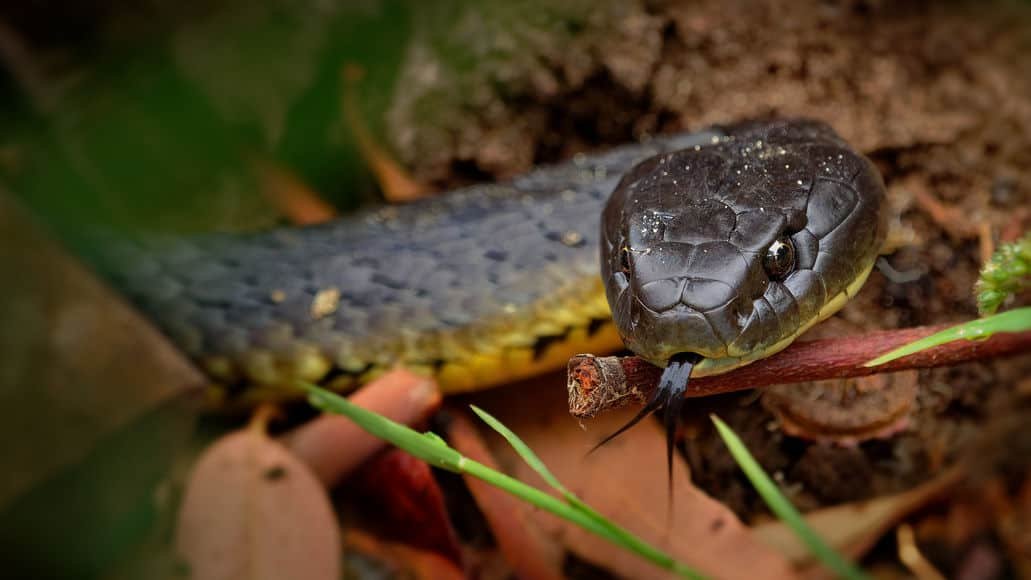
You’ll find the Eastern Brown Snake across Australia’s east coast. It ranks as the second most venomous land snake in the world. This snake lives in grasslands, woodlands, and even urban areas.
The Eastern Brown Snake has a scientific name of Pseudonaja textilis. You might also hear it called the common brown snake.
This snake is extremely fast-moving and aggressive when you threaten it. It has a bad temper, so encounters can be dangerous.
Eastern Brown Snakes cause more deaths in Australia than any other snake group. They thrive in populated areas, especially on farms where mice are common.
The snake’s venom is a powerful toxin that can cause serious harm quickly. You’ll want to avoid areas where these snakes are known to live.
If you’re in Australia, remember that Eastern Brown Snakes are responsible for a significant number of snakebite deaths in the country. Far more than the more venomous inland taipan.
9. Russell’s Viper
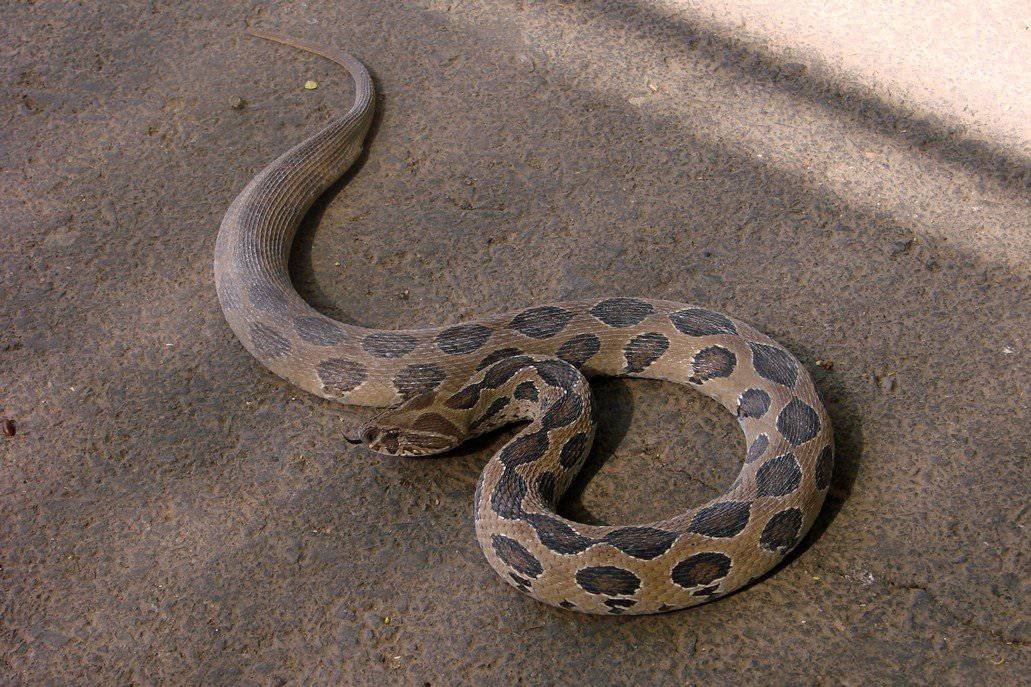
If you ever travel to Asia, you should be careful around Russell’s viper. This snake is one of the deadliest snakes on earth, responsible for many human snake bite deaths across its range.
You’ll find Russell’s viper in India, Sri Lanka, Bangladesh, Nepal, and Pakistan. It’s extremely common in open grasslands in many of these regions.
This snake causes an estimated 25,000 fatalities annually in India. That makes it responsible for more human fatalities in India than any other snake species.
You can recognize Russell’s viper by its stout body and broad head. It has a notoriously bad temper, which makes encounters even more dangerous.
The snake’s venom is a potent hemotoxin that can cause severe internal bleeding and organ failure. You’ll often spot these vipers in paddy fields hunting mice and rats.
10. Boomslang
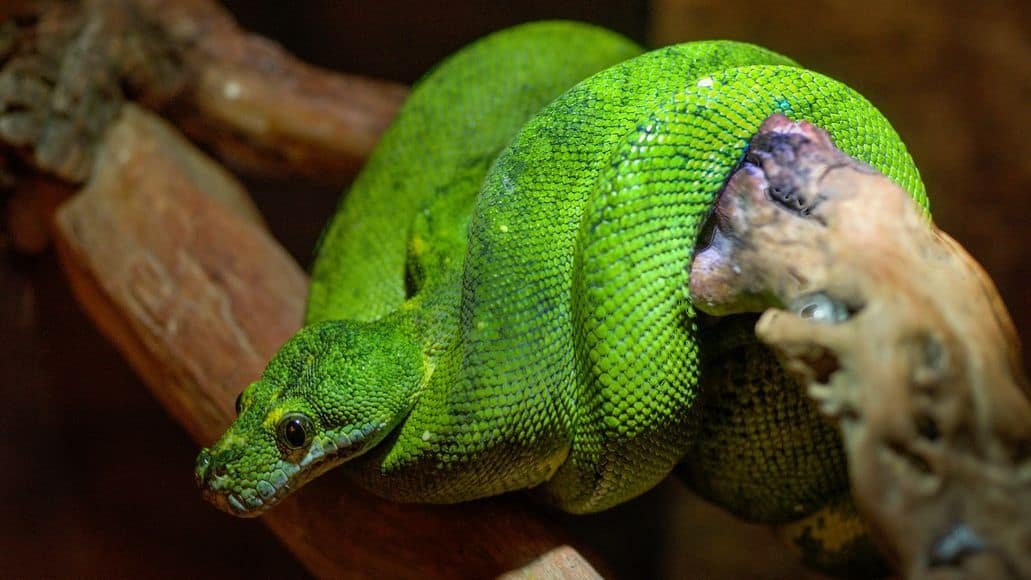
The boomslang is one of Africa’s most dangerous snakes. You’ll see this snake in trees across sub-Saharan Africa.
It has a slim build and can reach up to 6 feet in length. The colors range from bright green to brown or gray.
The boomslang’s venom attacks your blood’s ability to clot. This makes it extremely dangerous if you get bitten. Its venom can cause severe internal bleeding.
You might not notice much pain at first after a bite. Symptoms often take hours to show up, which makes treatment tricky.
This snake spends most of its time in trees, hunting birds and small animals. You’re unlikely to run into one unless you’re in its habitat.
If you ever see a boomslang, keep your distance. These snakes can strike quickly if they feel threatened. Luckily, boomslangs aren’t aggressive toward humans. They usually try to escape rather than fight.
Venom Composition And Effects
Snake venom contains different toxins that target specific body systems. These toxins can cause blood clotting problems, nerve damage, or tissue destruction, depending on the snake species.
Types Of Snake Venom
Snake venom falls into three main categories based on how it attacks your body. Each type works differently and causes distinct symptoms. Some snakes combine multiple venom types, making their bites even harder to treat.
Hemotoxic Venom
Hemotoxic venom destroys blood cells and damages blood vessels, causing internal bleeding. This venom stops your blood from clotting properly. Vipers like Russell’s viper and saw-scaled viper use hemotoxic venom.
Neurotoxic Venom
Neurotoxic venom attacks your nervous system. It blocks signals between nerves and muscles, which can cause paralysis and breathing problems. Cobras and mambas produce neurotoxic venom. The black mamba and king cobra are both famous for their powerful neurotoxins.
Cytotoxic Venom
Cytotoxic venom destroys cells and tissues around the bite area. It causes severe swelling, pain, and tissue death. Copperheads and some rattlesnakes have this type of venom.
How Snake Venom Affects Humans
Your body reacts to snake venom within minutes of a bite. The effects depend on the venom type and how much venom the snake injects.
- Hemotoxic venom causes bruising, swelling, and bleeding from your gums or nose. Your blood pressure can drop fast, and you might feel weak or dizzy.
- Neurotoxic venom often starts with drooping eyelids and slurred speech. Your muscles get weak, and breathing becomes difficult.
- Cytotoxic venom creates intense burning pain at the bite site. The area swells quickly and turns dark, with blisters forming as tissues die.
Some people go into systemic shock from any type of venom. Your heart rate jumps, blood pressure falls, and you might vomit or lose consciousness.
Time is critical with snake bites. Most venoms act fastest in the first few hours. Quick medical treatment with antivenom can save your life and limit permanent damage.
Habitat And Global Distribution Of The Most Venomous Snakes
The world’s most venomous snakes live in regions and environments that fit their survival needs. Venomous snakes are found in a wide range of habitats all over the world, from tropical rainforests to arid deserts.
Climate, prey, and human activity all shape where these deadly reptiles thrive. It’s kind of fascinating, honestly.
Where Venomous Snakes Are Found
You’ll find the highest concentration of venomous snakes in Australia, which has many of the world’s deadliest species, like the inland taipan and eastern brown snake.
Africa is also home to many dangerous snakes like the black mamba, which lives in woodlands, scrubs, and semi-arid savannas across the continent.
Asia has deadly species in both tropical and temperate regions. You’ll encounter king cobras in Southeast Asian forests and Russell’s vipers in grasslands and farmlands.
The Americas have their own venomous species. Coral snakes live in forests from the southern United States to South America. Fer-de-lance snakes prefer Central and South American rainforests. Rattlesnakes populate much of north America.
Factors Influencing Snake Populations
- Climate shapes where venomous snakes can survive. Most species need warm temperatures year-round, since they’re cold-blooded. That’s why tropical and subtropical regions have more venomous snakes than colder areas.
- Prey availability determines snake populations. Places with lots of rodents, birds, and other small animals support more venomous snakes. Agricultural regions often attract both prey and the snakes that hunt them. It’s a cycle that keeps repeating itself.
- Human development impacts snake habitats a lot. Urban expansion destroys natural areas, forcing snakes into new places. Some species adapt to living near people, while others disappear completely. It’s a tough world out there for snakes, honestly.
- Habitat type influences which species you’ll find in specific spots. Desert snakes like saw-scaled vipers have different needs than forest dwellers like green mambas.
Most Venomous Snakes: Conclusion
The world’s most venomous snakes are honestly pretty fascinating. Some of them are among the deadliest animals out there.
The inland taipan, black mamba, and king cobra top the list. Each of these snakes carries venom that’s seriously dangerous to humans.
Luckily, most venomous snakes would rather avoid people. They usually bite only if they feel threatened or cornered.
Key facts to remember:
- There are over 3,700 snake species on the planet.
- Not every snake is venomous, not even close.
- Snakes use venom mainly for hunting and self-defense.
- Most snake bites happen by accident.
It’s smart to keep your distance from wild snakes. If you spot one, just give it room and let it move on. These snakes actually play a big part in nature. They help control animal populations and keep things balanced in their ecosystems.
Honestly, they deserve a bit of respect. They’re not out to get anyone—they’re just living their lives in the wild.
If you ever run into a snake, your best bet is to back away slowly. Trying to catch or harm one? That’s never a good idea.
Leave a Reply